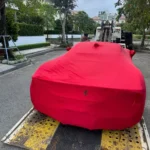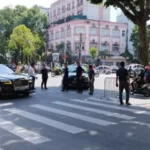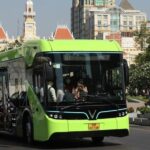Hanoi plans to pilot a low-emission zone model from 2025 to restrict polluting vehicles.
According to a recent report by the Hanoi Department of Transport, the city’s population is currently over 8 million, excluding 1.2 million transient residents who regularly live, work, and study in the city.
The number of motor vehicles is over 7.8 million, not including 1.2 million vehicles from other provinces and cities that travel within Hanoi.
The average growth rate in the 2019-2023 period was over 10% for cars and over 3% for motorcycles, while the ratio of land area dedicated to transportation has only reached about 12.13%, leading to congestion on roads.
This rapid urbanization has resulted in severe traffic congestion and air pollution in Hanoi. The city believes that as a developing city, traffic congestion is an existing issue.
Recently, the Hanoi People’s Committee has announced a draft resolution on constructing a resolution regulating criteria, conditions, procedures, and processes for identifying low-emission zones in the city, seeking public opinion.
The draft resolution proposes five criteria for determining low-emission zones. The first is based on demographic and economic characteristics. The second considers the current air quality and targets areas with air pollution from traffic emissions.
The third criterion is the feasibility of transportation infrastructure and accessibility. The fourth is the applicability of stricter vehicle emission standards. Lastly, the fifth criterion is the consensus between the government and residents to establish a low-emission zone.
The pilot project for the low-emission zone model, which will restrict polluting vehicles, is expected to be implemented from 2025. Motorized road vehicles, as defined in Clause 1, Article 34 of the 2024 Law on Road Traffic Order and Safety (except for electric cars and motorcycles), entering the low-emission zone must comply with specific emission standards, except for priority vehicles.
Hanoi identifies multiple sources of pollution, with transport being the largest contributor to PM 2.5 emissions, accounting for 50-70%. To address this, the city plans to phase out motorcycles in districts by 2030.
Hanoi will also implement policies to replace old motorcycles that do not meet safety and emission standards, designate areas that prohibit diesel-fueled cars, restrict motorcycles, trucks, and taxis, and encourage the replacement of diesel buses with electric ones.
Additionally, the city will introduce regulations to promote and attract investment in urban rail, BRT, Mono rail, and bus systems through public-private partnerships (PPP).
Thai Son (Tuoitrethudo)
The Green Revolution: Four Veteran Taxi Companies in Hanoi Unite for a Sustainable Future with 1,000 Electric Vehicles
Thanh Nga, Bac A, Que Lua, and Long Bien—four of Hanoi’s oldest taxi companies—have taken a significant step towards sustainability by signing a contract to purchase and lease 1,000 electric vehicles from VinFast. This move will see the companies operating on Xanh SM’s platform, marking a strategic collaboration and a pioneering effort to develop an electric taxi network. This initiative is a crucial step towards the goal of greening the capital’s transportation system.
The Prancing Horse’s First SF90 Stradale: A Rare Beast in Hanoi with Just Over 7,000 km on the Clock
The Ferrari SF90 Stradale is an exceptional supercar, and this particular model has an intriguing story. This stunning vehicle has made its way to Hanoi, becoming the first SF90 to grace the capital city. Now, it awaits its new owner, offering a unique opportunity for someone to become a part of its journey.
“Luxury Car Collision: Rolls-Royce Ghost Involved in an Accident with Hyundai Kona, Sustaining Severe Damage”
The Rolls-Royce Ghost, an epitome of luxury and opulence, has been spotted with a rather unfortunate blemish. A photograph has surfaced, revealing extensive damage to the rear door of this prestigious automobile. It appears that even the most exquisite of vehicles can fall victim to unforeseen circumstances, leaving behind a trail of questions and a blemish on its otherwise impeccable reputation.



























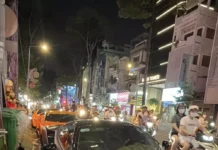
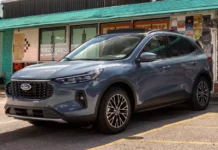
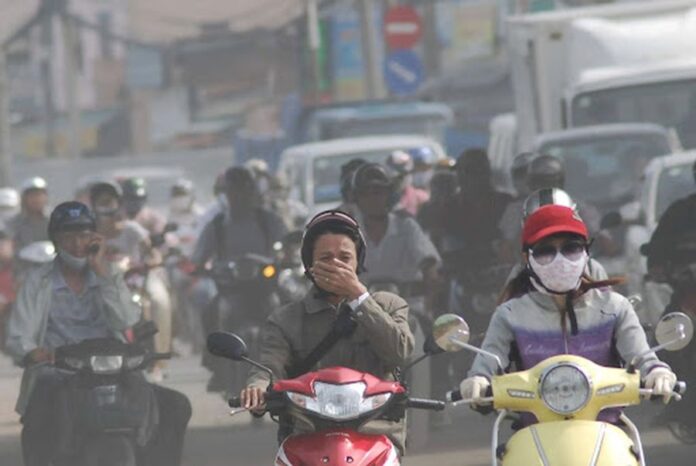
.jpg)
.jpg)


